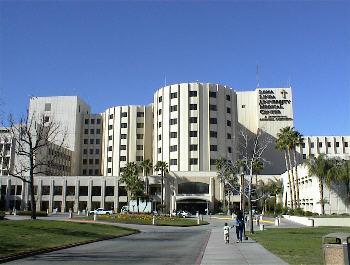
October 15, 2012 — For many people the words “proton therapy” may conjure up images of some type of high-tech treatment from the future. But the future is now; and since its development more than two decades ago, proton therapy has become a safe, highly effective and well-regarded option for the treatment of many forms of cancer. Still myths about proton therapy treatment continue to exist.
Father and son team James Slater and Jerry Slater pioneered proton therapy at Loma Linda University Medical Center (LLUMC) 22 years ago, making it the world’s first hospital-based proton treatment center for cancer. “Two decades later proton therapy continues to be misunderstood by many,” said Slater, who today serves as chairman of LLUMC’s Proton Treatment & Research Center. “This is very unfortunate because understanding proton therapy is the first step toward maximizing the wonderful benefits it can bring.”
In an effort to clear up the confusion and set the record straight, LLUMC offers answers to three of the most common misconceptions about proton therapy treatment.
Myth #1: Proton therapy is still an experimental treatment. — Since LLUMC brought modern proton treatment for cancer into the mainstream in 1990, there have been countless studies and trials that have shown proton therapy to be the treatment of choice for many types of cancer. Far from experimental, proton treatment has been refined and, coupled with leading-edge technology, has become one of the best treatment options for doctors and patients. So much so that patients literally travel from around the world to visit a proton treatment center where their cancer can be effectively treated.
Myth #2: Proton therapy is only effective for adults with prostate cancer. — While prostate cancer was one of the initial uses for proton therapy, the pinpoint accuracy of the proton beam also makes it a highly effective form of treatment for many other types of tumors that are often considered difficult to treat with standard radiation therapies. These include tumors found in the head, neck, lung and breast. At the same time proton therapy remains a highly effective treatment for prostate cancer as the targeted proton beams spare surrounding healthy tissue and minimize the typical side effects from standard photon beam radiation including incontinence and impotence.
Myth #3: Proton therapy is not a good option for children. — Just the opposite as proton therapy has proven to be the preferred method of treatment for many types of children’s tumors. This is due to the fact that proton beams specifically target the exact area of the tumor, which reduces/eliminates the “peripheral” radiation that can extend into surrounding tissue through other types of treatment.
“Because children are more sensitive to radiation than adults, standard radiation treatment typically is avoided in children, specifically those who are under 3 years old, as it can affect their bone growth,” said Lilia N. Loredo, assistant professor of radiation oncology at LLUMC’s Proton Treatment & Research Center. “Proton beams literally pinpoint specific tumors, sparing surrounding unaffected bone and tissue, which makes it both an ideal and highly effective form of treatment for all types of pediatric tumors.”


 December 11, 2025
December 11, 2025 









